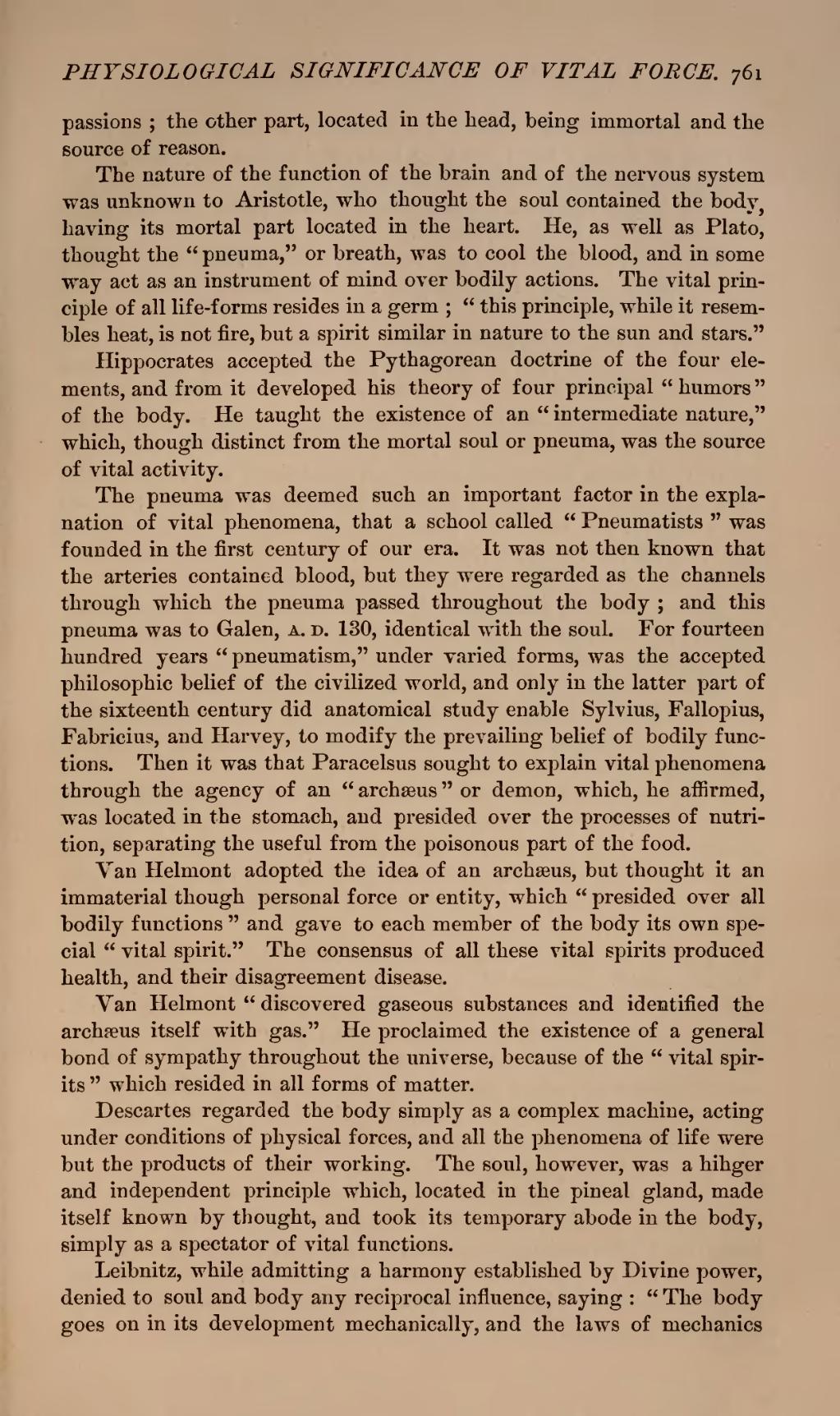passions; the other part, located in the head, being immortal and the source of reason.
The nature of the function of the brain and of the nervous system was unknown to Aristotle, who thought the soul contained the body having its mortal part located in the heart. He, as well as Plato, thought the "pneuma," or breath, was to cool the blood, and in some way act as an instrument of mind over bodily actions. The vital principle of all life-forms resides in a germ; "this principle, while it resembles heat, is not fire, but a spirit similar in nature to the sun and stars."
Hippocrates accepted the Pythagorean doctrine of the four elements, and from it developed his theory of four principal "humors" of the body. He taught the existence of an "intermediate nature," which, though distinct from the mortal soul or pneuma, was the source of vital activity.
The pneuma was deemed such an important factor in the explanation of vital phenomena, that a school called "Pneumatists" was founded in the first century of our era. It was not then known that the arteries contained blood, but they were regarded as the channels through which the pneuma passed throughout the body; and this pneuma was to Galen, A.D. 130, identical with the soul. For fourteen hundred years "pneumatism," under varied forms, was the accepted philosophic belief of the civilized world, and only in the latter part of the sixteenth century did anatomical study enable Sylvius, Fallopius, Fabricius, and Harvey, to modify the prevailing belief of bodily functions. Then it was that Paracelsus sought to explain vital phenomena through the agency of an "archæus" or demon, which, he affirmed, was located in the stomach, and presided over the processes of nutrition, separating the useful from the poisonous part of the food.
Van Helmont adopted the idea of an archæus, but thought it an immaterial though personal force or entity, which "presided over all bodily functions" and gave to each member of the body its own special "vital spirit." The consensus of all these vital spirits produced health, and their disagreement disease.
Van Helmont "discovered gaseous substances and identified the archæus itself with gas." He proclaimed the existence of a general bond of sympathy throughout the universe, because of the "vital spirits" which resided in all forms of matter.
Descartes regarded the body simply as a complex machine, acting under conditions of physical forces, and all the phenomena of life were but the products of their working. The soul, however, was a hihger and independent principle which, located in the pineal gland, made itself known by thought, and took its temporary abode in the body, simply as a spectator of vital functions.
Leibnitz, while admitting a harmony established by Divine power, denied to soul and body any reciprocal influence, saying: "The body goes on in its development mechanically, and the laws of mechanics
